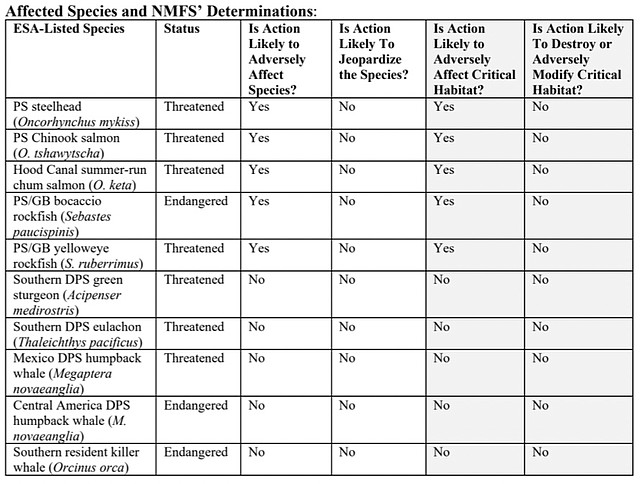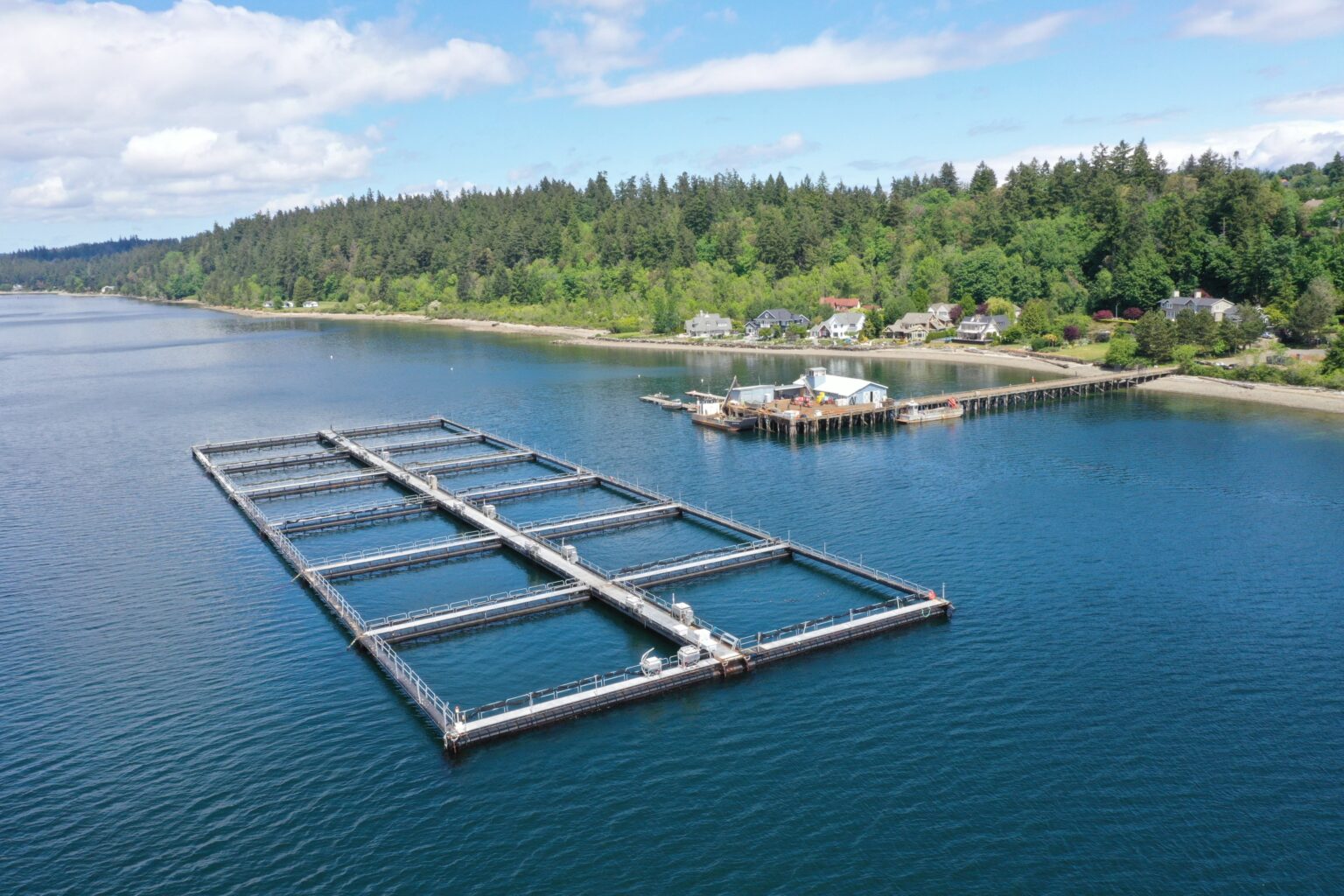Finfish farming does not harm local salmon populations, according to a new biological opinion from the National Oceanic and Atmospheric Administration.
NOAA’s National Marine Fisheries Service began conducting research on salmon, orcas and several other threatened and endangered species in the Puget Sound region in late 2018. The analysis was initiated to study the impacts of the federal government’s approval of state sediment management standards for fish farms.
The report concluded that the proposed plan is “not likely to jeopardize” the continued existence of Puget Sound chinook or steelhead, Hood Canal summer-run chum salmon, or Georgia Bain yelloweye rockfish or bocaccio in interior state waters.

The study results come on the heels of a recent Washington Supreme Court decision upholding Cooke Aquaculture Pacific, LLC’s steelhead trout aquaculture permit, issued by the Washington Department of Fish and Wildlife (WDFW).
Several organizations, including the Wild Fish Conservancy (WFC) and the Center for Biological Diversity, filed an appeal challenging WDFW’s approval of the permit. The Swinomish Indian Tribal Community submitted documents on behalf of the WFC, while the state Department of Ecology submitted on behalf of Cooke.
According to court documents, the Wild Fish Conservancy says WDFW violated the State Environmental Policy Act by “failing to consider and disclose appropriate alternatives to the proposal.” WFC also says an environmental impact statement should have been required before WDFW issued a permit. Both the King County Superior Court and the state Supreme Court sided with Cooke.
Northwest Aquaculture Alliance’s president Jim Parsons, who serves as the CEO of Jamestown Seafood, celebrated the study, which he said validated the court decision.
“After years of meticulous research and study, the scientists at NOAA have concluded, with full scientific certainty, that net-pen aquaculture in Puget Sound is safe for the environment and safe for the endangered species that live in these waters,” he said.
“This study, along with the recent unanimous Washington Supreme Court decision upholding Cooke Aquaculture Pacific’s permit to raise native steelhead in Puget Sound, finally puts to rest one of the biggest myths of all: that fish farming has a negative impact on endangered Chinook salmon and Orcas.”
Open-net pens, though, are considered a “high risk” fish farming system, according to SeaChoice, a Canadian conservation organization.
“American commercial fishing and marine finfish aquaculture cannot coexist,” a 2018 letter to Congress signed by more than 100 members of the fishing industry stated. “Due to the extensive and well documented environmental harm caused by marine finfish aquaculture in the United States and elsewhere, this emerging industry should not be permitted.”
The letter references significant marine pollution caused by fish farms from excess feed, untreated fish waste, antibiotics and antifoulants; fish can also escape from the farms, threatening wild stock.
The pens used in aquaculture farming “allow free exchange of waste, chemicals, parasites and disease,” according to SeaChoice.
The letter was signed by fishermen and members from fish industries across the country, including 21 from Washington.
In 2017, a local Atlantic salmon net pen collapsed near Cypress Island in Skagit County, triggering an investigation from the state’s Department of Natural Resources (DNR). The net, owned by Cooke Aquaculture, contained more than 300,000 Atlantic salmon, and failed because Cooke did not “adequately clean the nets containing the fish,” according to the DNR report.
DNR estimated between 243,000 and 263,000 fish escaped when the nets failed. The collapse was hailed as an environmental disaster in some news accounts at the time, and small numbers of Atlantic salmon were later found upstream in Puget Sound rivers, including the Skagit. None of the salmon have been proven to have reproduced, or established an ongoing population in Puget Sound, however.
NOAA’s biological opinion references the failure, as well as Cooke’s plan to farm steelhead trout.




